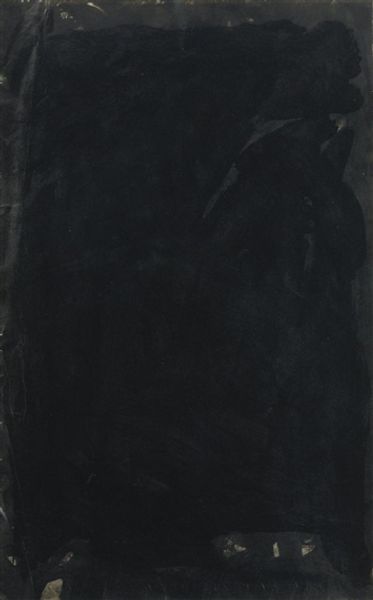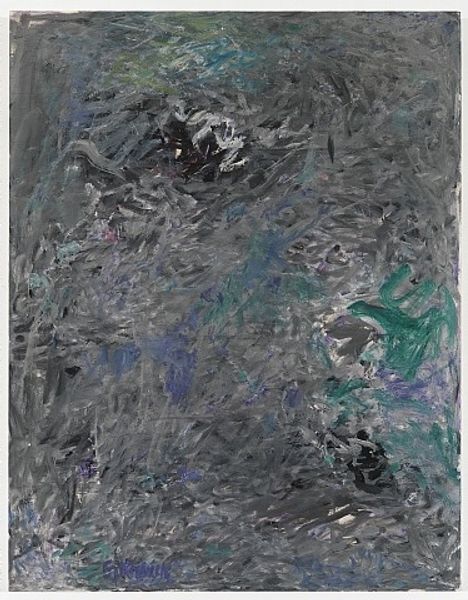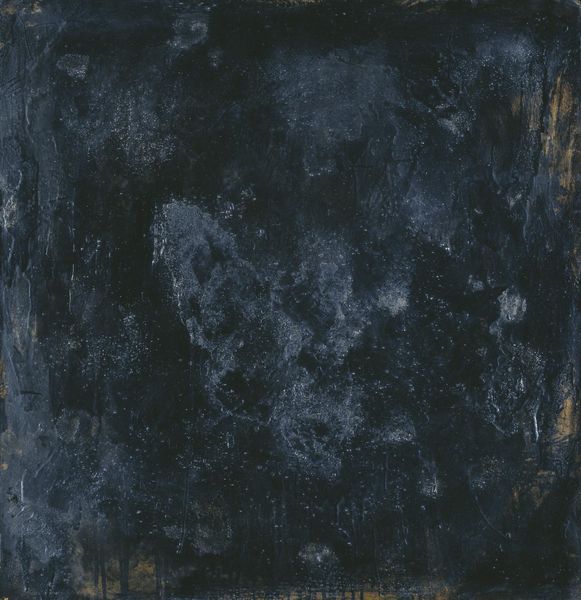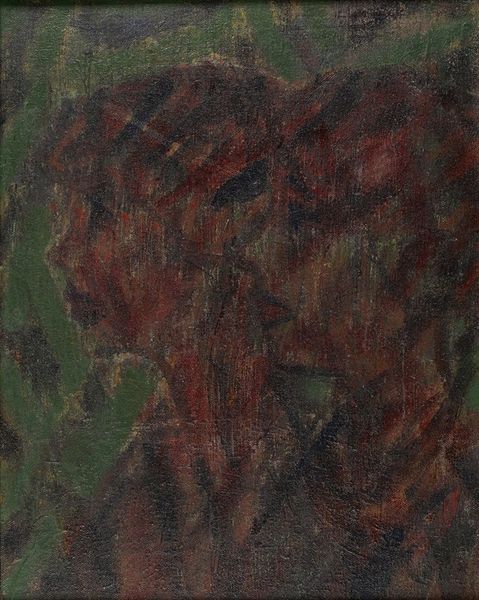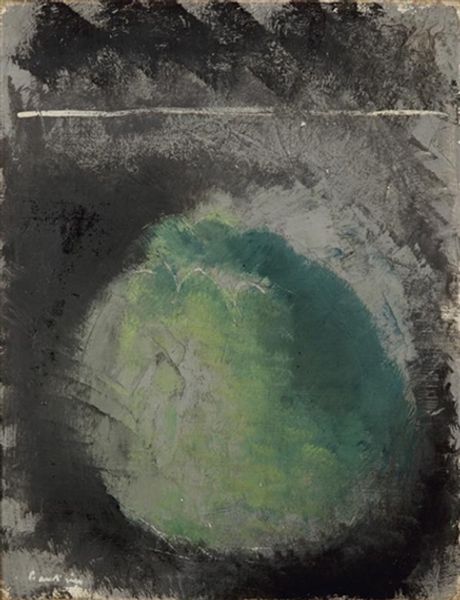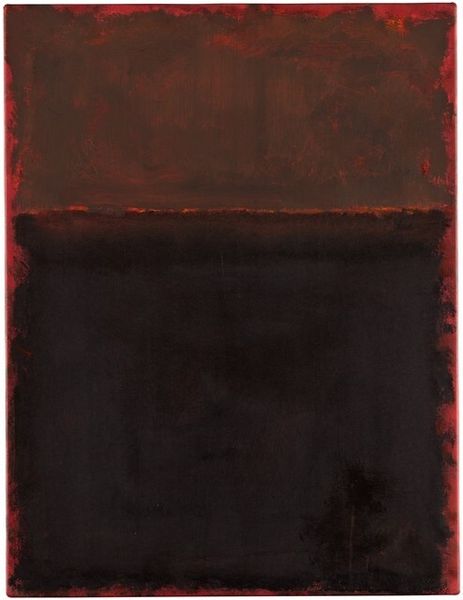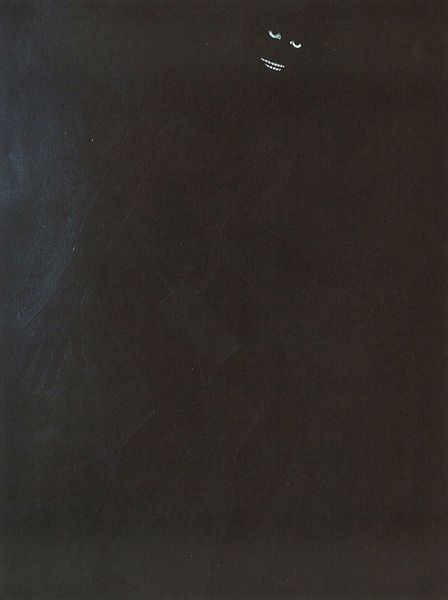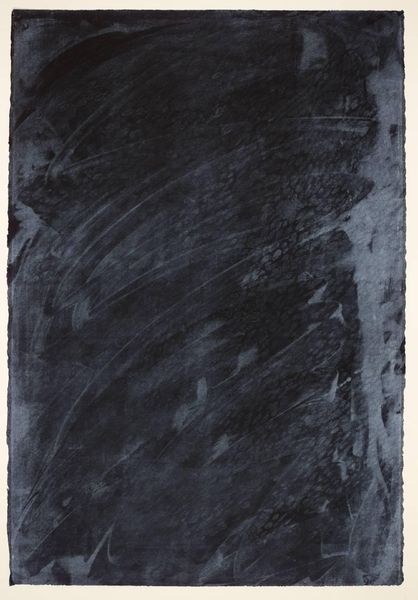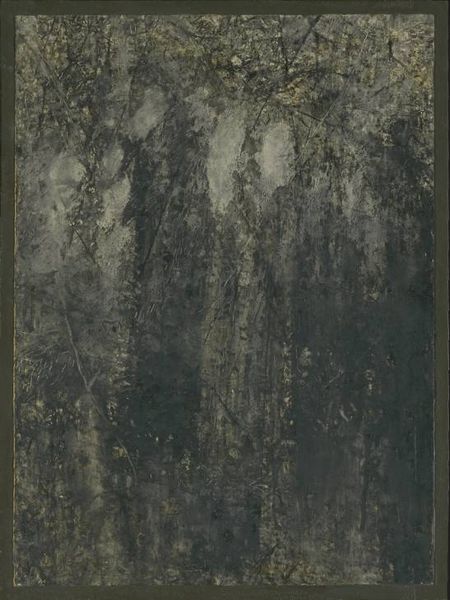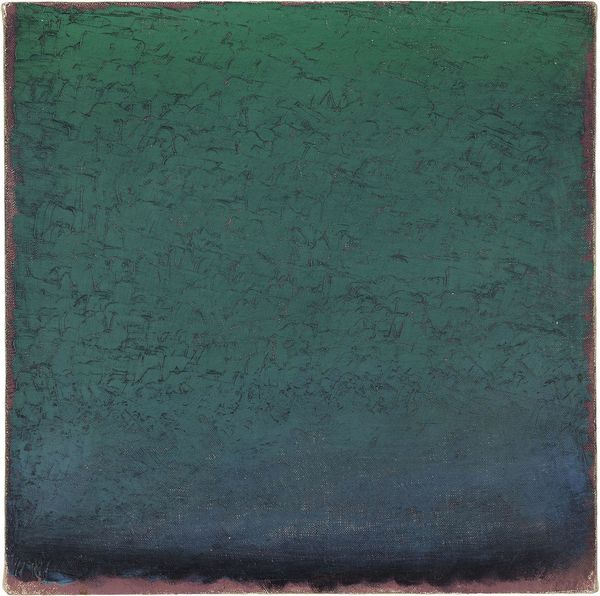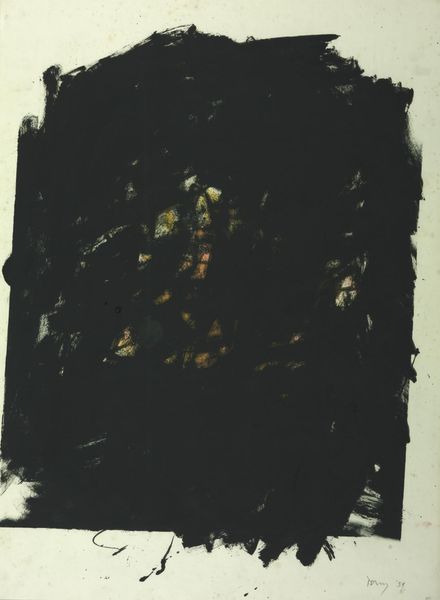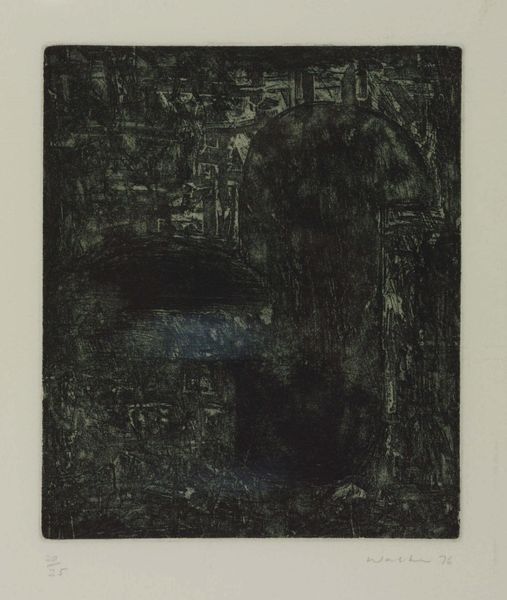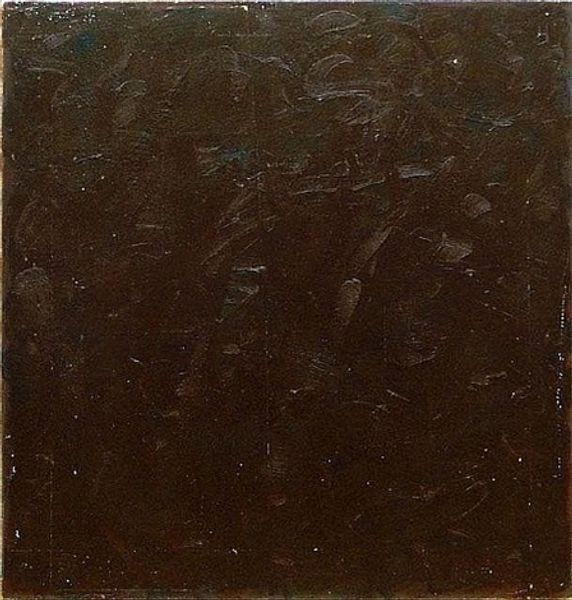
oil-paint, impasto
#
portrait
#
abstract-expressionism
#
abstract expressionism
#
oil-paint
#
figuration
#
impasto
#
monochrome
Dimensions: overall: 121.92 x 127 cm (48 x 50 in.) framed: 132.08 × 127 × 3.81 cm (52 × 50 × 1 1/2 in.)
Copyright: National Gallery of Art: CC0 1.0
Editor: Here we have Lester Johnson's "Dark Portrait," made around 1960. The oil paint is applied with such thick impasto, giving it a really somber and weighty feeling. What do you make of it? Curator: The monochrome palette and heavy impasto serve to almost bury the figure, don't they? Given its date, think about the context. The early 60s were a time of great social upheaval. Editor: Yes, civil rights movements were gaining momentum, and there was a lot of underlying tension in America. Curator: Exactly. The portrait becomes a reflection of the individual swallowed up by the weight of those social forces. Do you see how the absence of clear facial features makes the figure universal? Editor: I do. It's not just *a* portrait, but almost *any* portrait. Like a stand-in for anyone feeling that pressure. But wouldn't clear features suggest a distinct personality reacting against the oppressive forces, therefore adding a strong statement? Curator: Perhaps, but Johnson seems more interested in depicting the overwhelming impact of those forces. In leaving it indistinct, the work asks us to consider who has been forgotten, whose stories remain untold in the mainstream narrative. How the cultural elite chose which works were added to collections... Editor: So it's almost a critique of representation itself, by obscuring it? Curator: Precisely. What were initially seen as simple portrait styles in art, have roots far deeper than just paint strokes and canvas, impacting who gains notoriety, which in turn affects us all. Editor: That really reframes how I see this painting. I was focused on the immediate feeling, but you’ve made me think about its role in a much bigger conversation. Curator: And hopefully this conversation might spark much wider thought of who else gets to represent in today's society, compared to yesteryear.
Comments
No comments
Be the first to comment and join the conversation on the ultimate creative platform.
